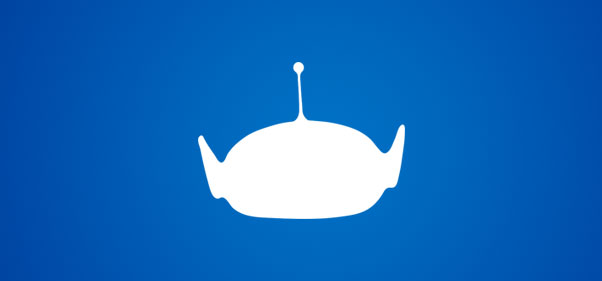
Special to Upcoming Pixar
Walt Disney once said that "for every laugh there should be a tear." Well, Disney-Pixar’s latest film, "Up," offers a good dose of both.
"Up" opens today across the U.S. and is already being praised by critics in several countries after being featured as the opening night selection earlier this month at the prestigious Cannes Film Festival.
The PG-rated film tells the story of Carl Fredricksen, a 78-year-old widower and former balloon salesman who flies his house to South America. He does so in part to make good on a promise he made to his late wife, Ellie, as well as to save the home from a deneloper’s wrecking ball and because he’s not all to keen on moving into a retirement home.
The story pairs Carl with Russell, a pudgy 8-year-old Wilderness Explorer seeking his "assisting the elderly" merit badge. Russell becomes an inadvertent stow-away taken along for the ride to Venezuela’s Paradise Falls.
"Up" is an action-packed, adventure comedy, but one with great heart. It’s arguably among Pixar’s best and it’s certainly the studio’s most emotionally engaging. It’s wildly funny, but it’s also quite tender and touching. Bring tissues and be prepared.
"We’re a big fan of feel," said "Up" director Pete Docter, who previously gave the world "Monsters, Inc." and served as an early draftsman on "Wall-e" in addition to helping write "Toy Story" and "Toy Story 2."
"I got to be great friends with Joe Grant, a Disney legend who was one of the heads of story on ‘Dumbo’ (1941) and designed the wicked queen in ‘Snow White’ (1937)," Docter said. Grant was "working up until literally the day he died. He died at his drawing table, just short of his 97th birthday.
"Something he would always tell me is, ‘what are you giving the audience to take home?’ By which, I think he meant yeah jokes and gags are funny, but what’s the emotional thing that’s going to stick in someone’s heart and stay with them for hours, days, years?"
What will resonate with adults in "Up" is a montage early in the film showing Carl and his soul mate, Ellie, set to a poetic waltz composed by Michael Giacchino. This short segment, lasting only a few minutes, follows their meeting as children dreaming of adventure through their marriage and building a life together.
It’s touching but complex in its simplicity as the couple deals with dreams delayed or denied by the sometimes harsh realities of life. It also includes Ellie’s untimely death, a moment that seers itself unto your heart.
Even if you can’t relate to everything that Carl and Ellie go through, you’ll certainly feel empathy for them and be able to forgive Carl any curmudgeonly behavior later in the film.
Docter is most proud of this segment and it’s what some people are going to take home with them: The joys (they’re included, too) and sorrows of the Fredricksens’ life together, followed by gales of laughter and a few more touching scenes later in the film, most involving Carl and Russell and their evolving relationship.
The biggest laughs come thanks to several great sequences following the introduction of a dog named Dug and a rare, flightless gorgeously colored giant bird that Russell names Kevin.
>
There’s also a villain, Carl and Ellie’s childhood hero — an explorer named Charles Muntz — and his pack of dogs, none as cute or friendly as Dug.
Muntz is introduced in "newsreel" footage at the beginning of "Up," but has gone a bit mad after spending decades in the jungles of Venezuela trying to capture this rare bird and return to the U.S. so that he can clear his name in the scientific community.
These characters and the comic elements involving them are sure to delight children, but adults are likely to find themselves laughing just as hard.
Again, the film resonates because of real-life relatable moments: The senior citizen turning off his hearing aid so he doesn’t have to listen to an all-too-chatty child; the boy who has to go to the bathroom five minutes after you’ve asked him; the dog who, thanks to an ingenious collar that gives voice to his thoughts, simply wants to be man or boy’s best friend and play fetch — unless he senses a nearby squirrel. Dug is one of the few cartoon canines that’s utterly believable as a dog, even with this gift of speech.
"Ultimately, I think the humor plays better if it has that foundation of emotion," Docter said. "If you don’t have that, then you might have something that’s light and fun, but it’s the emotion that you take home with you."
"It’s those two things you’re constantly looking for in development," added producer Jonas Rivera. "The entertainment value and origin of the story and then what’s the driver emotionally. All the entertainment value in the world goes only so far unless there’s really that reason for making the movie."
Rivera and Docter credit the culture and working environment at Emeryville-based Pixar for the studio’s unparalleled string of 10 critical and commercial feature film hits. Pixar’s secret relies in part on a small team of writers and storyboard artists working out all the kinks before the film is animated. Story reels are built from the storyboards and this comic-book-like film is screened internally.
John Lasseter, fellow Pixar directors Brad Bird, Andrew Stanton and other studio leaders become the first audience.
"Before we show the story to the world, I have to make Andrew Stanton and Brad Bird laugh or cry or whatever. That’s a tough order, but I think that’s in part a reason for the success of our films," Docter said. "It’s also really surprisingly unusual. I would think everybody would do this. As a filmmaker grab all your friends and say look at this, tell me what’s wrong, how I can make it better and that’s what we do. We tear them apart and then rework them. Not very many other studios do that."
In addition, the story reels and work-in-progress footag is constantly screened internally at Pixar.
"We have this kind of creative brain trust at Pixar and we’ll invite all of the story departments, but then we’ll invite human resources, the kitchen staff or accounting," Rivera said. "We’ll simulate a real audience and we’ll find the commonalities, see if everyone from Brad Bird to the guy in accounting laughed at that or no one did."
Up" is also notable as Pixar’s first 3-D feature. The studio released an animated 3-D short, "Knick Knack," back in 1989, but there were very few theaters 20 years ago equipped to screen 3-D films.
Even though it’s being shown both in traditional 2-D format as well as Disney Digital 3-D, don’t expect "Up" to play with 3-D as a gimmick.
"We tried to use 3-D as just another element to tell the story. So, for example, when Carl is alone in his house we really tried to squash space to make him feel claustrophobic and locked in and then, by contrast, as he floats his house off, we really tried to push the depth and make him feel free," Docter said. "3-D to us is just another tool like lighting, like color, furthering the emotion we’re trying to communicate to an audience. We really tried to use it as a window that you’d look into."
Docter also compared Pixar’s use of high-tech 3-D to stereo sound.
"When I was growing up, my dad had a bunch of those late 50s, early 60s first stereophonic records. You remember those. Trumpets over there. Bongos here. Trombones over there and it was all really extreme. Today, all of the stuff we listen to is in stereo but it’s much more subtle and it’s all about the song.
"I think that’s how we’re approaching 3-D. It’s not about selling 3-D and going hugga bugga at people," he said. "We use it as much as we can to support the storytelling. Hopefully, after 3 minutes, you forget about the 3-D and are just drawn into the film, the story and the characters."
Last modified: May 29, 2009




Nice repackaging of the Up press packet.
The article isn’t based on press packet materials, but on a roundtable interview with Pete Docter and Jonas Rivera.
It is true that people interviewed dozens of times do seem to develop a script of replies to various questions, but I still haven’t read all that much about those heartwarming and heartbreaking images in the montage.
The thing that I find most interresting is how all the advertising seems to focus on the laughs. with nary a word about the tears. It’s those tears and the scenes that will have them welling up that you’re most likely going to remember for hours, days and years.
I don’t think I’ll ever be able to hear Giacchino’s “Ellie’s theme” waltz and not be mentally transported to that montage and then smile thinking about Carl and Ellie’s remarkable love.